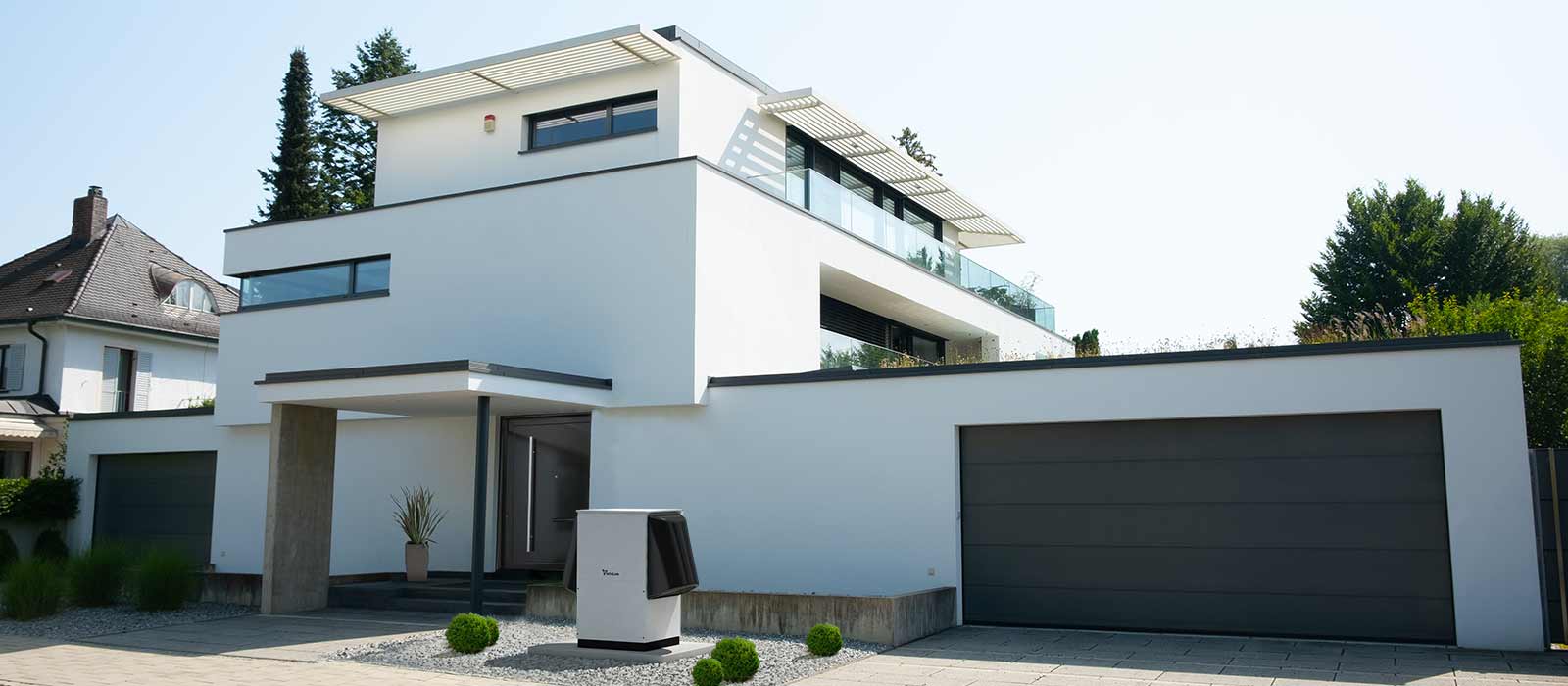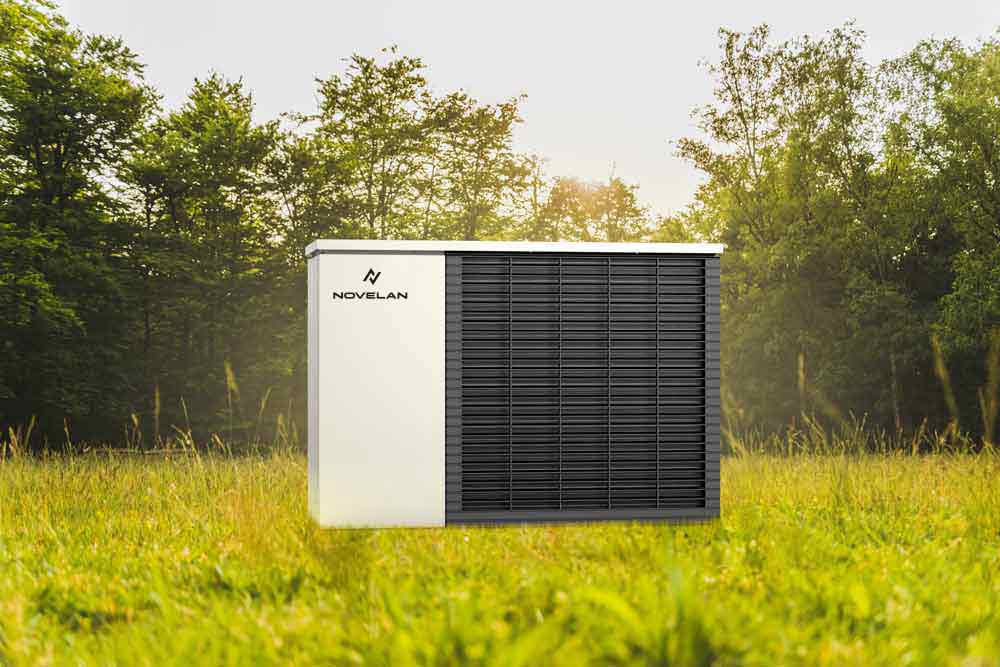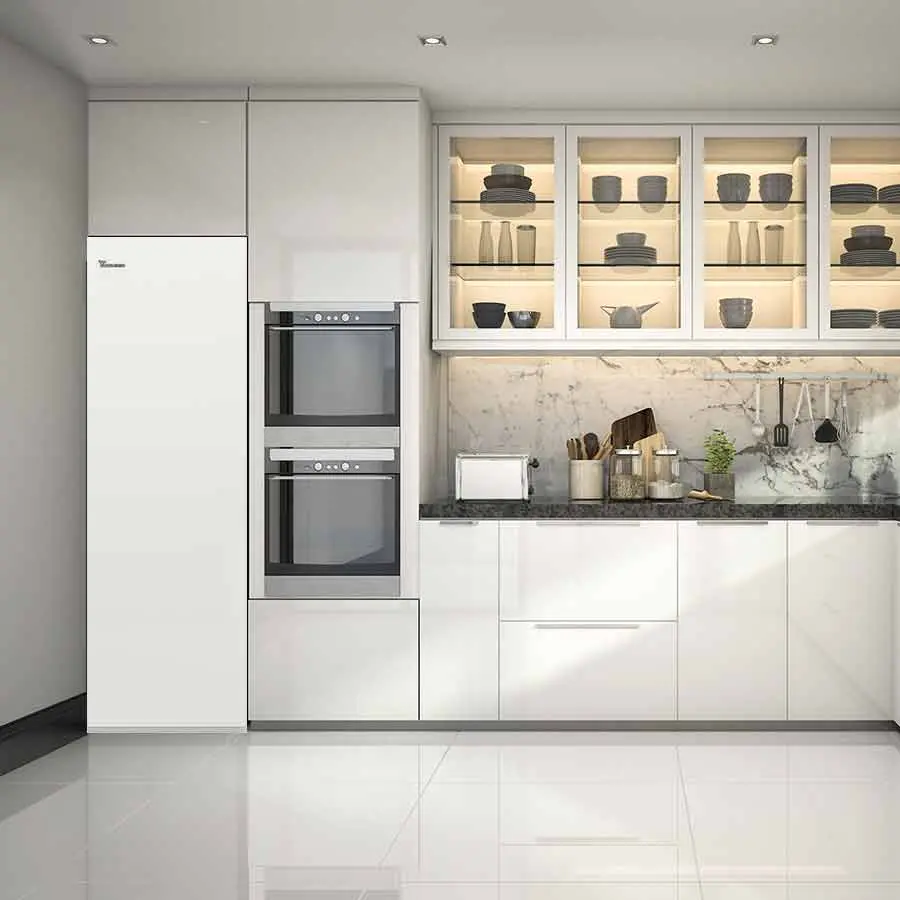The operating principle of a heat pump
The function of a heat pump is comparable to that of a refrigerator. While a refrigerator extracts heat from its interior to cool food and releases the heat into the environment, a heat pump extracts heat from the environment to provide heating for the interior of a building. The environment offers ambient air, the ground as well as groundwater for heat pumps as inexhaustible and free energy sources. To convert this environmental energy into heating energy, the heat pump makes use of the physical principle known as the Joule-Thomson effect.
Step by step: How a heat pump works
1. All heat pumps have a so-called refrigeration circuit, i.e. an evaporator, in which there is a liquid refrigerant with a low boiling point. The refrigerant is heated by environmental heat from the air, water, or ground and becomes gaseous and evaporates at very low temperatures.
2. In the next step, the gaseous refrigerant enters a compressor. It compresses the refrigerant vapor, whereupon the temperature increases and the volume decreases. For this process, heat pumps require electrical energy (electricity) - the lower the temperature difference between the heat source and the refrigerant, the less electricity is needed.
3. In the condenser, the gaseous refrigerant releases its heat to a heat distribution and storage system and is then transferred to the heating circuit. The heat can eventually be used to heat the building, for example via underfloor heating, or to heat the hot water. As a result, the temperature of the refrigerant drops again, and it slowly liquefies, but it is still under high pressure.
4. Through the expansion valve, the refrigerant loses the remaining pressure and is brought from a high temperature level back to a low one. Then the process starts again, and so the cycle of the heat pump runs over and over again.
The individual components of the heat pump at a glance:
Just like the very first heat pumps in the 19th century, modern heat pumps continue to use the four main components: an evaporator, a compressor, a condenser, and an expansion valve.
The refrigerant: The refrigerant has an extremely low boiling point and circulates continuously in the heat pump circuit.
The evaporater: Refrigerant and ambient heat meet in the evaporator. The refrigerant absorbs the heat from the environment (air, water, earth) and evaporates.
Compressor: The refrigerant vapor arrives in the compressor and is compressed there, so that its volume decreases and the temperature increases at the same time.
The condenser: Here the heat is transferred to the building and the aggregate state of the refrigerant changes again from gaseous to liquid.
The expansion vale: The remaining pressure as well as the temperature are lowered so that the cycle can start again.
Explanatory video: How a heat pump works
Heat sources at one glance
Functionality of a heat pump at sub-zero temperatures
Even at sub-zero temperatures, the heat pump manages to extract enough heat from the environment to heat the home. The temperatures of the ground as well as the groundwater are constant throughout the year, so that minus temperatures have no influence on the operation of geothermal heat pumps and water heat pumps. Only the air-source heat pump has a hard time with freezing air temperatures. That's because the colder the ambient air, the harder it is for the heat pump to extract heat from it for heating. In extreme minus temperatures, it is therefore supported by a heating element, which makes it possible to maintain the heating operation. This only turns on when the air heat pump is no longer able to extract enough heat from the air. But don't worry: The heating costs do not automatically rise to infinity as a result, because these particularly cold days are rather rare in Germany as well as other Central European countries.





